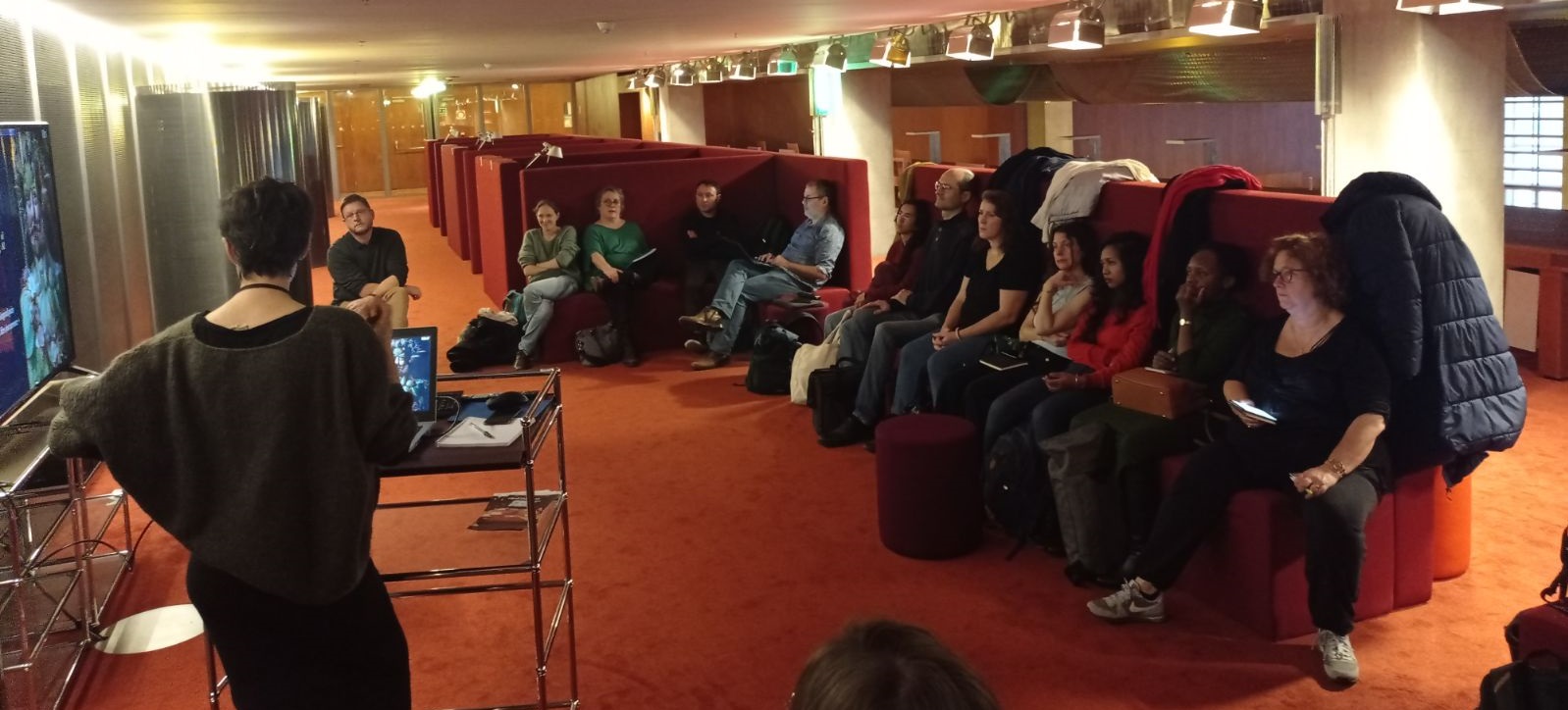Atlas linguistique de la Polynésie française / Linguistic Atlas of French Polynesia
Atlas linguistique de la Polynésie française / Linguistic Atlas of French Polynesia
J.-M. Charpentier (†), CNRS-LACITO & Université de la Polynésie Française, Papeete; A. François, CNRS-LACITO & ANU, Canberra.

Chapitres introductifs : Sommaire ; Hommage à Jean-Michel Charpentier ; Remerciements ; L’Atlas linguistique de la Polynésie française ; Histoire sociolinguistique de la Polynésie française ; Le plurilinguisme en Polynésie française : Histoire et avenir
Introductory chapters : Table of Contents ; Hommage à Jean-Michel Charpentier (French only) ; Acknowledgments ; The Linguistic Atlas of French Polynesia ; Sociolinguistic history of French Polynesia ; Multilingualism in French Polynesia : Past and future.
Taxonomie sémantique et Index des cartes.
Semantic taxonomy and Map index.
Cartes – sections 1 à 4 : Le corps humain ; Fonctions naturelles ; Vie, santé, maladies et infirmités ; Soins du corps, vêtements et parures.
Maps – sections 1 to 4 : The human body ; Natural functions ; Life, health, illness and disability.
Cartes – section 5 : Position et mouvement du corps.
Maps – section 5 : Position and movement of the body.
Cartes – section 6 : Cours de la vie, échanges sociaux.
Maps – section 6 : Life course, social exchange.
Cartes – section 7 : Culture matérielle, techniques.
Maps – section 7 : Techniques, material culture.
Cartes – sections 8 à 10 : Milieu naturel ; Zoologie ; Botanique.
Maps – sections 8 to 10 : The natural environment ; Fauna ; Flora.
Index (français, anglais, tahitien), Bibliographie et Résumé (967 Ko) Finderlists (French, English, Tahitian), References and Abstract.
‘Ei ha’apotora’a
E hitu reo tō te ārea fenua rahi o Pōrīnetia farāni – te reo tahiti, tuha’a pae, ra’ivavae, rapa, ma’areva, pa’umotu, ‘enana/’enata – ‘e tae noa ato’a atu i te mau ‘āma’a e rave rau o teie mau reo. I te roara’a e ‘ahuru matahiti, ‘ua tītorotoro māite nā ‘aivāna’a ‘ihi reo nō te CNRS (pū mā’imira’a nō Farāni), ‘o Jean-Michel Charpentier rāua ‘o Alexandre François, i te mau huru reo e parauhia i nā motu e piti ‘ahuru i teie ārea fenua. Maoti te mau hōho’a fenua, e fa’a’ite tā rāua puta i te mau huru paraura’a o te hō’ē ta’o i terā ‘e i terā motu. Hau atu ïa i te 2250 hōho’a fenua tē ha’afaufa’a maita’i nei i te raura’a reo i Pōrīnetia farāni. ‘Ua fa’anahohia teie mau hōho’a fenua ‘ia au i tō rātou tumu parau (tino, orara’a, ta’ata ‘e tōtaiete, ta’ere ‘e ‘ihi anoha’a, rā’au tupu ‘e ‘ānimara) ‘e ‘ua hōro’ahia tō rātou tātarara’a ‘e tae noa atu te tahi mau fa’atorora’a nā roto i te reo farāni, peretāne ‘e tahiti. ‘Ei ‘ōmuara’a i te puta, ‘ua fa’ahitihia te huru fa’a’ohipara’a ‘e te mau nu’ura’a e fa’aruru-noa-hia nei ā e te mau reo o Pōrīnetia farāni ‘o tē topatopa noa atu ra ho’i i te ravera’a a teie tau ‘āpī. E pūhara-noa-hia teie puta rau reo tei ‘ī i te mau huru fa’aaura’a, ‘ia riro ‘ei moiha’a nā te mau ‘aivāna’a ‘e te mau ‘orometua ha’api’i ‘e tae noa atu i te feiā ato’a e ‘ana’anatae nei i te faufa’a reo o teie ārea fenua nō Pātitifā.
Résumé
Le vaste territoire de la Polynésie française compte sept langues distinctes – tahitien, austral, ra’ivavae, rapa, mangarévien, pa’umotu, marquisien – dotées à leur tour d’une forte variation interne. Fruit de dix ans de collaboration entre deux linguistes du CNRS, Jean-Michel Charpentier et Alexandre François, l’Atlas linguistique de la Polynésie française rend hommage à ce riche paysage linguistique et dialectal en documentant minutieusement vingt parlers différents du territoire, à l’aide de plus de 2250 cartes. Organisées thématiquement – corps, vie, individu et société, culture et techniques, flore et faune – ces cartes lexicales s’accompagnent de notes explicatives et d’index en français, anglais, tahitien. Des chapitres introductifs présentent le contexte social et la dynamique historique des langues de Polynésie française, toutes plus ou moins fragilisées par la modernité. Publié en accès libre, cet ouvrage multilingue et comparatif s’adresse non seulement aux chercheurs et aux enseignants, mais aussi à tous ceux que passionne le patrimoine linguistique de cette région du Pacifique.
Abstract
The vast territory of French Polynesia is home to seven distinct languages – Austral, Ra’ivavae, Rapa, Mangarevan, Pa’umotu, and Marquesan – which in turn show internal variation. The fruit of ten years of joint work by two linguists of French CNRS, Jean-Michel Charpentier and Alexandre François, the Linguistic Atlas of French Polynesia pays tribute to the rich linguistic landscape of the country by documenting thoroughly twenty different communalects, in the form of 2250 maps. Organised by topics (body, life, individual and society, culture and technology, flora and fauna), these lexical maps are supplemented by explanatory notes and indexes in French, English, Tahitian. Text chapters in French and English present the social profile and the historical dynamics of the territory’s languages, which are all endangered to various extents. Published in open access, this multilingual and comparative atlas provides an essential reference to scholars and teachers alike, as well as to a broader audience keen to explore and preserve the linguistic heritage of the Pacific region.
CHARPENTIER Jean-Michel et Alexandre FRANÇOIS, 2015, Atlas linguistique de la Polynésie française / Linguistic Atlas of French Polynesia, Berlin-Papeete, De Gruyter–UPF,, 2562 p., 2553 cartes.
(Cf. aussi page de présentation de l’atlas) Paru le 26 février 2015

